INDIAN ARMED FORCES CHIEFS ON
OUR RELENTLESS AND FOCUSED PUBLISHING EFFORTS

SP Guide Publications puts forth a well compiled articulation of issues, pursuits and accomplishments of the Indian Army, over the years

I am confident that SP Guide Publications would continue to inform, inspire and influence.

My compliments to SP Guide Publications for informative and credible reportage on contemporary aerospace issues over the past six decades.
The World's Largest Arms Fair
The host country, Britain is all set to expand its export footprint and this was outlined by the Defence Secretary, Sir Michael Fallon who suggested that Britain would look for more of the pie of the international defence market, demand driven by increasing war and terror
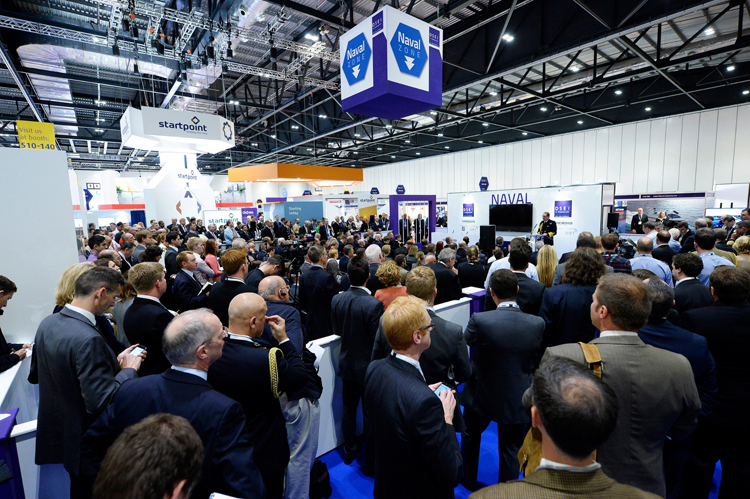
Total world military expenditure rose to $1686 billion in 2016, an increase of 0.4 per cent in real terms from 2015, according to new figures from the Stockholm International Peace Research Institute (SIPRI). Military spending in North America saw its first annual increase since 2010, while spending in Western Europe grew for the second consecutive year.
The United States remains the country with the highest annual military expenditure in the world. US military spending grew by 1.7 per cent between 2015 and 2016 to $611 billion. Military expenditure by China, which was the second largest spender in 2016, increased by 5.4 per cent to $215 billion, a much lower rate of growth than in previous years. Russia increased its spending by 5.9 per cent in 2016 to $69.2 billion, making it the third largest spender. Saudi Arabia was the third largest spender in 2015 but dropped to fourth position in 2016. Spending by Saudi Arabia fell by 30 per cent in 2016 to $63.7 billion, despite its continued involvement in regional wars. India's military expenditure grew by 8.5 per cent in 2016 to $55.9 billion, making it the fifth largest spender.
This is indicative of the trend in increased arms acquisitions. This obvious trend was reflected at the world's largest arms fair in London – DSEI which stands for Defence and Security Equipment International (DSEI) which concluded on September 15. The event hosted over 1,600 exhibitors from 54 countries, growing every year, though there were protests outside, opposing the proliferation of arms.
The host country, Britain is all set to expand its export footprint and this was outlined by the Defence Secretary, Sir Michael Fallon who suggested that Britain would look for more of the pie of the international defence market, demand driven by increasing war and terror.
"As we look, exiting the European Union, to go increasingly global, we see our equipment as a platform for even stronger partnership," Mr Fallon told delegates, including international military commanders. "As we look to life post Brexit and spread our wings further across the world, it's high time we do more to compete for a share of this international export market."
Mr Fallon said the UK secured defence orders totalling £5.9bn in 2016 and is already the world's second-largest weapons exporter. "But now it's time to build exportability into our thinking from the off, aligning it with the requirements of international clients," he added.
New weapons include Dreadnought submarines, Apache attack helicopters, Ajax armoured vehicles, F35s and frigates. The UK is also working to develop artificial intelligence for use in warfare, including a "ship's brain", as well as advanced robots. Mr Fallon announced Britain is buying 56 bomb disposal robots from Harris Corporation, as well as commissioning a £10m "active protection system" for armoured vehicles frequently targeted by missiles and IEDs.
Lockheed Martin's Modular Turret
Lockheed Martin UK showcased the 40 mm Modular Turret, designed to up-arm the Warrior infantry fighting vehicle (IFV). Lockheed demonstrated the potential for upgrading and customising the turret to suit customer needs. The turret is the result of significant investment from Lockheed Martin and employs common systems from the Ajax reconnaissance vehicle in the United Kingdom and the Jaguar armoured fighting vehicle from France. The addition of an externally launched Javelin missile provides an engagement envelope of 4 km as well as gives the platform a credible firepower capability against main battle tanks.
MBDA-led consortium unveils high energy laser cannon
A key component of a high energy laser cannon being produced under a £30 million contract for the UK Ministry of Defence was unveiled at DSEI. Under development by an MBDA-led consortium which includes Qinetiq, Leonardo-Finmeccanica, Arke, BAE Systems, Marshall and GKN, the Dragonfire system will be a 50kW class directed energy weapon designed for use on both land and sea.
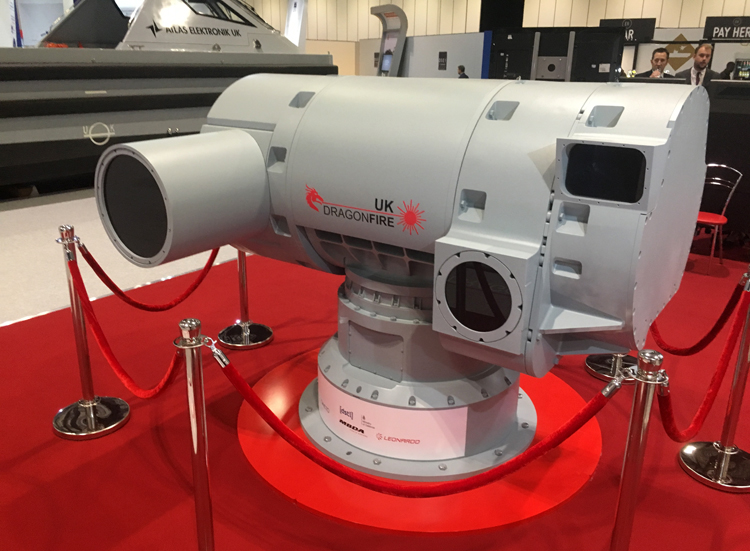
Laser weapons have key advantages over traditional systems: the munition is potentially unlimited, and it operates at the speed of light so the time from when you say "fire" to the weapon hitting its target is more or less instantaneous.
Aggressor variant of Gripen C
Saab is pitching a dedicated 'Aggressor' variant of its Gripen C fighter aircraft for the upcoming UK and US pilot training requirements. Aggressor, the new variant of the multirole fighter was unveiled at DSEI. The head of Gripen sales and marketing, Richard Smith, said that the Gripen Aggressor has been tailored for pilot training role, and that the UK Air Support to Defence Operational Training (ASDOT) and the US Adversarial Air (AdAir) requirements.
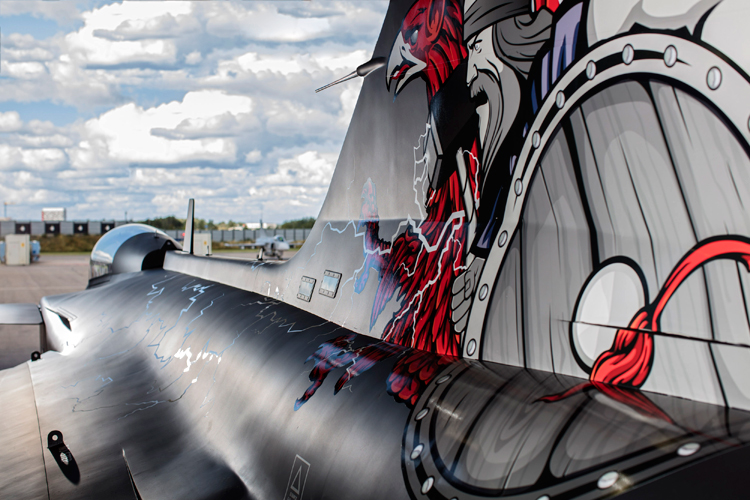
"There are two countries where we see market potential for the Gripen Aggressor; namely in the UK for ASDOT and in the US for AdAir. We have a product that matches the requirements, and we have the business case to make it work," Smith said. The Gripen Aggressor is essentially a new build Gripen C that has had its offensive weapons capability (including the internal cannon) removed. While it is currently modelled on the single-seat Gripen C, Smith noted that a twin-seat Gripen D version could be offered if a customer requested it.
Leonardo's Icarus
An active protection system electronic architecture that will allow the British Army to tailor its sensors and countermeasures to meet a changing threat was demonstrated in a £10 million (U.S. $13 million) deal between a Leonardo-led team and the government's Defence Science and Technology Laboratory. The technology demonstrator programme, known as Icarus, will lay the groundwork for the potential deployment of the capability across the Army's vehicle fleet, according to Leonardo.

Oshkosh's JLTV
With a sale of the Joint Light Tactical Vehicle to the British military seemingly in the bag, platform-builder Oshkosh Defense showcased what the machine might look like when the British Army gets its hands on it. Oshkosh fitted its show vehicle with an in-service Kongsberg remote weapon station, AmSafe Bridport anti-rocket-propelled grenade armor and a Harris radio.
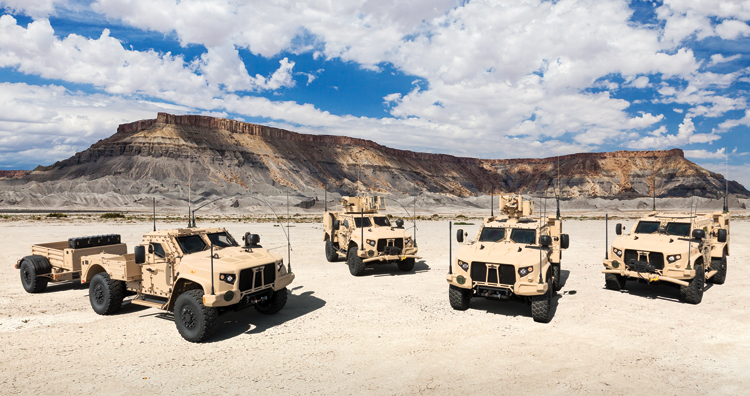
Elbit Systems, CAE focusing on training
Elbit Systems and CAE signed an agreement to jointly pursue British Ministry of Defence training opportunities under the Defence Operational Training Capability (Air) Programme. They are to focus on the DOTC(A) Core System and Services and the Typhoon Future Synthetic Training projects. The projects are intended to enable improved Royal Air Force training, support the MoD-wide requirement to download live training into synthetic environments, and allow a balancing of live and synthetic training.

ST Kinetics Bronco for variety of mission
Singapore's ST Kinetics showcased its newest version of its Bronco all-terrain tracked carrier vehicle designed to support a wide variety of mission sets through easy reconfiguration. First fielded in 2001 to the Singapore Army in 2001, ST Kinetics has produced several hundred of its first-version vehicles with more than 20 variants. The second version of the vehicle was built for the British Army — known in the U.K. as the Warthog — for operations in Afghanistan. The vehicle fleet was withdrawn from the country in 2014. Bronco 3 is "the combination of the best of the lessons that we have learned in Bronco 1 and 2," Phillip Ou, an ST Kinetics executive, told presspersons.
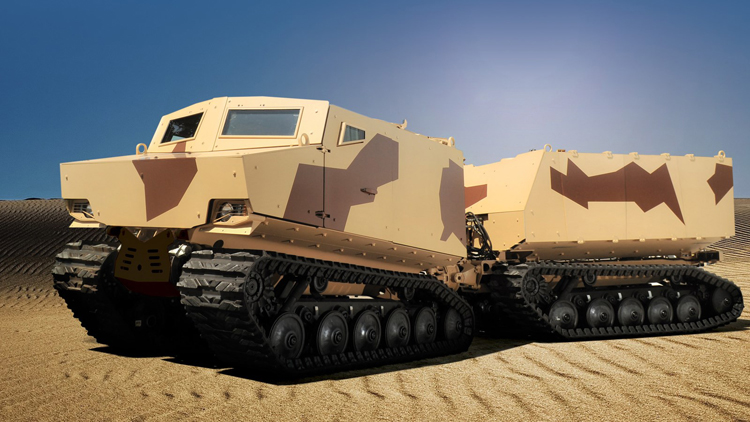
Cobham launches ICE
Cobham launched a new Integrated Communications Environment (ICE) product range which provides major improvements to existing communications systems on platforms. The new ICE products include a multi-radio interference cancellation system and new high-performance multi port V/UHF antenna.
The integration of multiple radios and other communications systems on a single platform or in a congested environment causes radio frequency interference which can dramatically reduce the effective radio range. This increasingly operational problem is being exacerbated by the increase of on-board communications systems which can mean they are competing for data and spectrum allocation.
BAE System unveils NAUTIS 5
BAE Systems unveiled NAUTIS 5, the latest version of its flagship mine counter measures (MCM) system. NAUTIS stands for Naval Autonomy Tactical Information System and is used to counter the ever present threat of naval mines. It is installed on board over 65 ships from seven navies across the world, including the Royal Navy's Hunt and Sandown class mine counter measure vessels (MCMVs).
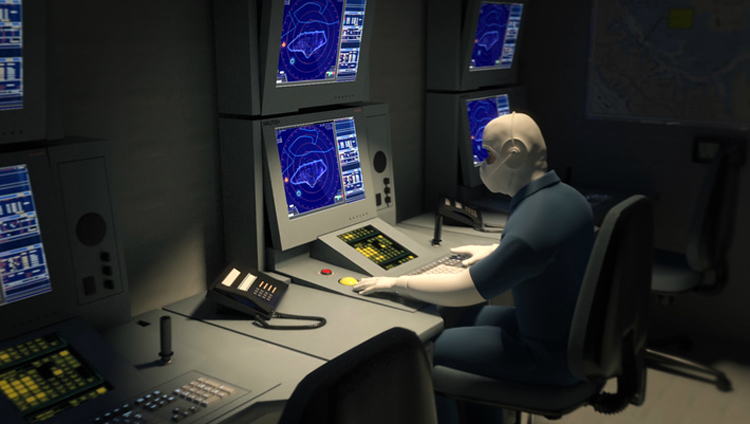
NAUTIS 5 is the result of BAE Systems' long term investment in MCM capabilities. It incorporate a number of new and improved features including: improved command and control for autonomous and off-board systems, which can be easily integrated thanks to a new open architecture, a new and improved human-computer interface utilising the latest graphical technologies and embedded onboard training.
Thales unmanned technology development
Thales announced that it would develop future autonomous and unmanned technology across air and sea by investing in two new UK-based trials and training centres. Thales will invest £7 million (€8 million). The new £1 million facility in Turnchapel Wharf, Plymouth will be Thales's maritime autonomy trials and training centre. This waterfront facility will provide access to trials areas for development of cutting edge maritime autonomous systems and position Thales at the centre of future maritime autonomy capability. The facility will act as the key maritime integration, test and evaluation centre for the combined United Kingdom and French Maritime Mine Counter Measures (MMCM) Programme.





